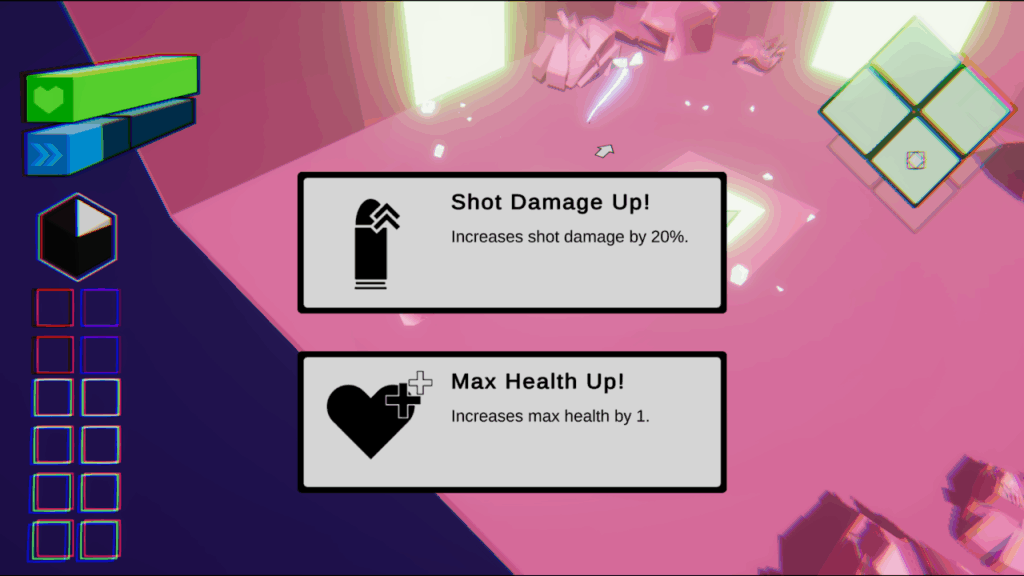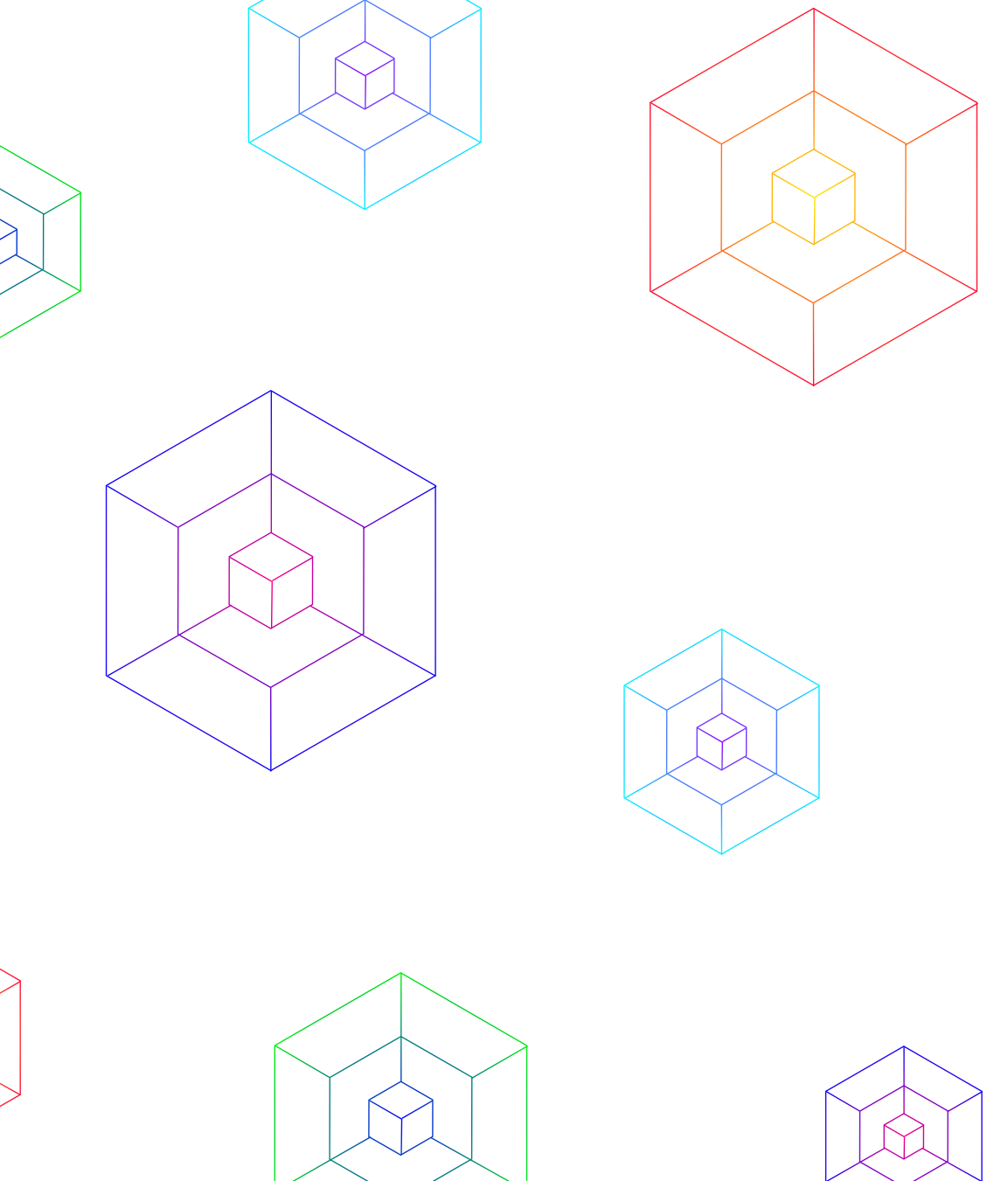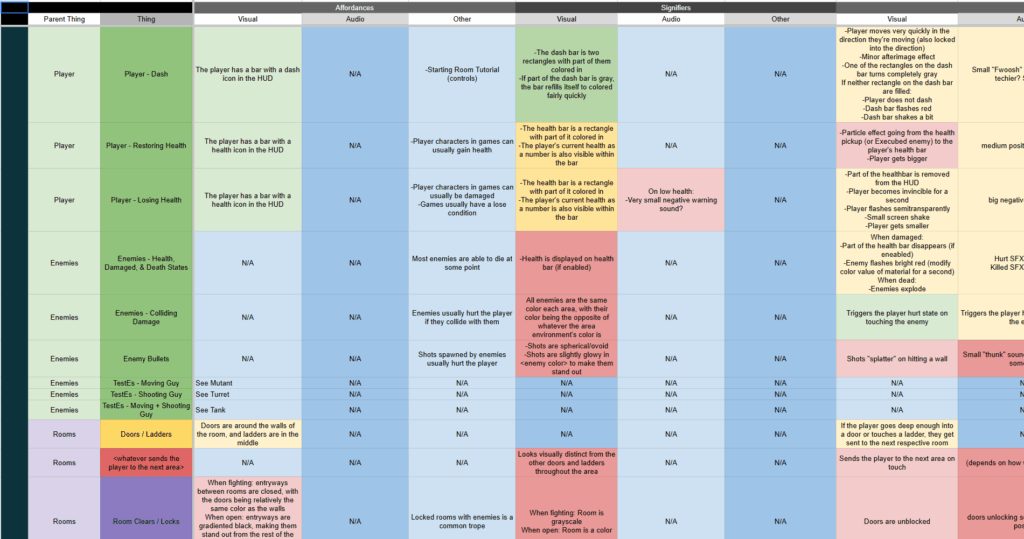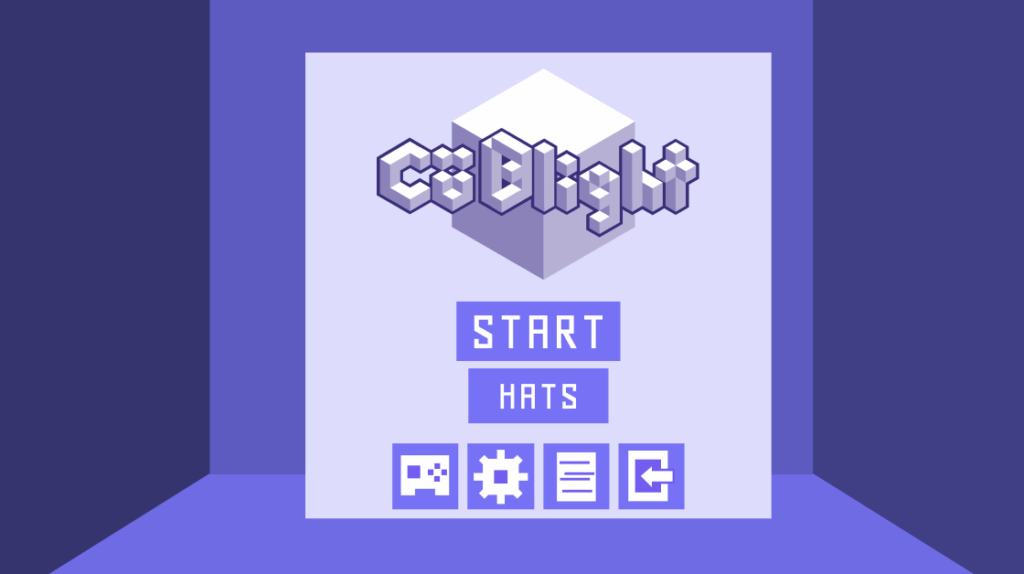
Cū Blight
Cū Blight is a top-down roguelike shooter developed by The Cube Root under DigiPen Institute of Technology from Sep ’22 – Apr ’23.
This was a 10-person team, of which I served as Creative Director. I created and updated design-based documentation (Overview, ASF, etc), designed the HUD, 3D-modeled most original assets within Maya, and worked closely with my teammates to ensure our vision of the game was unified.
Cū Blight’s Trailer
Overview
Probably my favorite team game I produced at DigiPen; the Cube Root are just such a nice bunch. Overall, I felt I contributed a lot to the game and am very happy with the final product.
Cū Blight more or less remained consistent with what was pitched, that being a 2.5D top-down shooter roguelike with incredibly low-polygon assets. Probably the most important thing I added to the game was the Execubtion, making the main method for the player to heal being dashing into an enemy while they’re at low health. That game-feel of ramming into an enemy to shatter them is just wonderful.
Game Systems & Pacing
The original pitch for Cū Blight (before I signed onto the project) was as a room-based roguelike inspired by Enter the Gungeon & The Binding of Isaac. Having come right off the heels of modding Isaac for the vast majority of the previous summer, I asked to join the team and to serve as its Creative Director, which the team accepted with open arms.
We originally did have the item-based system of Isaac in mind, but realized very quickly that modifying the player’s shots would take far too much time to develop, and so only developed two shot modifiers and two dash modifiers, with all other upgrades being simple stat-ups, which gave the added benefit of being a lot easier to balance for.
I was also in charge of how progression within the game would work; the team and I eventually decided to have something closer to Isaac in that regard, having a “floor” with a series of rooms that would steadily grow larger the further the player went. At the end of the floor, the player would fight a set boss before moving onto the next floor, rinse and repeat until they win.

Cū Blight’s Upgrade Menu

Cū Blight Gameplay Screenshot
Inspritations & Innovations
Aside from Isaac and Gungeon, our main inspirations were DOOM Eternal and Mighty No. 9 of all things, being the basis for getting the enemy to a point where you can dash into them for healing. Additionally, we relied on Just Shapes and Beats both for its visuals, as well as for the feel of its dash compared to Gungeon, and NieR: Automata’s hacking segments for visuals, having clear delineation with its more monochrome color scheme.
Also, although this isn’t in the game, I based the pacing of the game’s trailer on the trailer for Shovel Knight: Specter of Torment. You’ve got your intro, gameplay section, mechanic introduction, seeing it in action, and then a hook with the bosses; it’s great!
Hats!
Surprisingly, I actually wasn’t the person that pitched having unlockable hats; that was our producer. However, I took that idea and ran with it, realizing that we could have our hats reference all of the other games currently in development for that class at DigiPen. Figured that’d be a nice little thing to honor the other games everyone else were passionately making (as well as for networking purposes, heh). So, I put out a message saying that that was our plan and to message me if they had any specific requests for a hat/wanted their team to be excluded for whatever reason, and a lot of people got back to me, which was super cool!
The team and I decided that hats would be unlocked when completing a floor, at a rate of one hat per floor clear. In retrospect, it’s a bit slow compared to how long people are going to be playing the game for, but it’s a rate that’d work anywhere else.
Aside from those, we also had a running gag of an “Everything Hat” that we decided to make the reward for defeating the final boss, the Tesseract.

Cū Blight’s Hats Menu
Game Design Document
This was the first thing I did for the project, since it outlines all of our major decisions. It covers our high-level overview, intended audience, design pillars, and intended experience track. Halfway through the project, all of the team members looked back at the doc and reflected on what we have currently, what we plan to do, and what we want to do in the game. We then updated the doc accordingly to better plan out what we wanted to do for the rest of the duration working on the project.
Our major changes were down-scoping from four to three floors and having more of a focus on our dash attack for upgrades, since the dash attack was way more interesting than we originally thought (as well as the game feel of the execubtions).
ASF Spreadsheet
Good ol’ ASF Spreadsheet. Nothin’ beats that.
Anyway, this was the second thing I did for the project, right behind the Game Design Doc. It covers all of the affordances, signifiers, and feedback for things that happen in the game, ie. showing the player that the healing pickups are good and that projectiles are bad. I kept it updated throughout the course of the semester with what we currently had in the game, also letting it act as a high-level checklist, functioning similarly to a Trello board in that regard.
Main Menu Figma Remake
A few years later (in early 2025), I remade Cū Blight’s main menu partially for fun, partially as a demo of what I can do in Figma. Still not 100% happy with the new UI, since I made it in like a week, but it’s still miles better than the old one!




